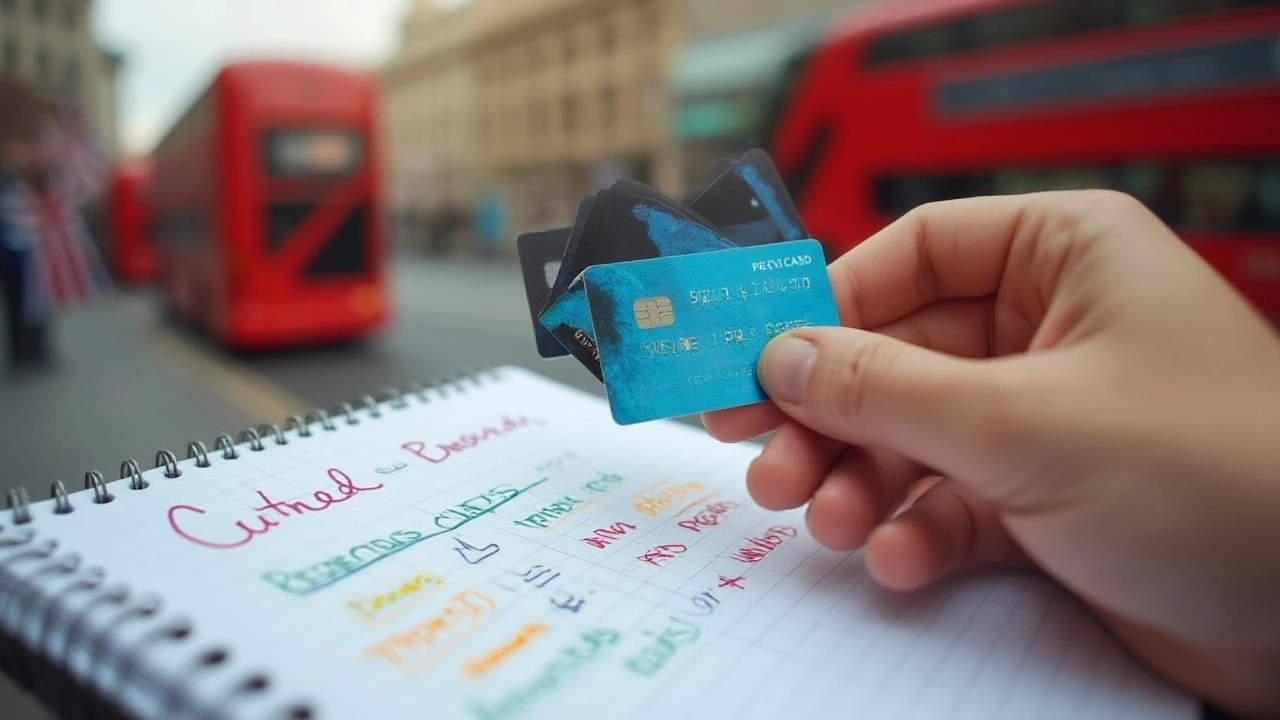If you look around, nearly every adult American has at least one credit card in their wallet—actually, the Federal Reserve says about 83% of Americans had one in 2024. Everyone seems to swear by their favorite. But when you try to pick one for yourself, it’s like staring at a wall of cereal boxes, each promising different deals. Want points? Miles? Cash back? Zero fees, or at least low interest? It can get overwhelming pretty fast, and the fine print always feels like it’s written by someone hoping you won’t actually read it. So how do you cut through the hype and focus on what really matters to you?
Why Do the Details Matter?
Take a look at two cards side-by-side and they can look identical at first. But dig a little deeper and you’ll spot some big differences. It’s more than picking a name you recognize. Every credit card company loves to slap on eye-catching perks, but those shiny signup bonuses and rewards lose their sparkle if high interest rates or hidden fees follow you around. For instance, people who carry a balance could end up paying $300 or more extra on interest each year compared with someone who pays off everything every month—according to a 2024 Experian study. That’s a couple of car payments gone, just to interest.
Another thing: most people never redeem their rewards, or they don’t use them in the smartest way. In fact, a Bankrate report last year found that 31% of rewards cardholders had at least $120 of unused points or miles—money basically left on the table. The bottom line? The right card is the one that fits your personal habits. It’s about knowing exactly how you spend, what you value, and what you’ll actually use. A card loaded with airline miles is useless if you rarely travel, but if you’re constantly ordering takeout, a cash back card that gives you 5% back on restaurants makes way more sense.
Don’t ignore your credit score, either. Cards with the flashiest benefits usually require a good score—FICO says around 690 or higher. If your score is lower, you might get hit with higher rates or lower limits. Before you apply, check your credit. It’s free at AnnualCreditReport.com once a week. No kidding.
The Big Four—Rates, Fees, Rewards, and Perks
When people say "read the fine print," this is what they mean. If you want to really compare credit cards, put these four categories side by side:
- Interest rates (APR): This is the annual percentage rate you pay if you carry a balance. Right now, according to WalletHub, average APRs are over 22%—the highest in a decade. Even a small balance can snowball.
- Fees: Look beyond the annual fee. Cards may sneak in balance transfer fees, foreign transaction fees, or late payment fees. Those can eat any rewards you earn real fast.
- Rewards: Some cards offer cash back, others hand out airline miles or points you can use for stuff like gift cards or Amazon shopping. The key is finding rewards that fit your actual life. And pay attention to how easy it is to actually use those rewards.
- Perks: Extras like purchase protection, travel insurance, or VIP airport lounge passes sound cool, but do you really use them? It's only valuable if it lines up with your needs.
Here’s a table showing some typical features, so you can get an idea how cards stack up:
| Feature | Cash Back Card | Travel Rewards Card | Basic Credit Card |
|---|---|---|---|
| Annual Fee | $0 - $95 | $95 - $550 | $0 |
| Avg. APR | 18% - 26% | 19% - 24% | 21% - 29% |
| Rewards Type | 1-5% cash back | 1-3 miles/dollar | None |
| Other Perks | None or basic | Lounge access, insurance | None |
Don’t fall for a huge signup bonus if you have to spend way more than you usually do. If a card offers $500 for spending $4,000 in three months and your normal expenses are $600 a month, you’d have to stretch your budget just to get the payout—which doesn’t make sense if you’d land in debt.
Digging into the Rewards: Are They Worth It?
This part is where people get starry-eyed with all the possible points, miles, and shiny extras. But pause for a second. Not all rewards are created equal, and you have to read the rules. Some rewards cards put limits on how much you can earn. For example, you might get 5% back on groceries, but only on the first $1,500 each quarter. After that, it might drop to 1%—so the rewards table can look great on paper, but not deliver big value year-round.
Then there’s the issue of rotating versus flat rewards. Think about whether you want to keep up with rotating categories that change every few months (and require activation), or if you’d rather keep it simple and get the same flat rate on everything. Most people don’t have the patience to remember which card to use every quarter for maximum rewards. A flat-rate card might mean you earn a little less in the hot categories but make up for it with less hassle.
Now, onto travel cards. Travel rewards can really pay off—especially if you fly regularly or stay at hotels a lot. Some cards double your points or give you free checked bags and priority boarding (Delta SkyMiles card is a classic for that). But what about blackout dates, or complicated rules for redeeming points, or annual fees that sting if you don’t travel much? Some cards let you use points as cash at places like Amazon or through PayPal, which can make your rewards easier to claim.
If you’re into maximizing credit card points, some folks keep a spreadsheet to track where to use each card. NerdWallet even has a free tool to help you figure out which card to use at each store. But if all that sounds like too much work, stick with one or two cards that give you consistent rewards—ideally 1.5% cash back or more on everything.

How Do Fees and Interest Add Up?
It’s tempting to ignore fees if you see a huge bonus or killer rewards rate, but here’s where people slip up most. The average American pays $113 a year in credit card fees—most of them avoidable, according to a 2024 survey from J.D. Power. And interest is even sneakier: Americans paid $155 billion in interest last year alone. Every $1,000 you carry could cost you $220 a year in interest with a 22% APR. Nobody wants to pay extra unless the rewards are truly worth it—and for most, they’re not.
Annual fees sometimes make sense, especially if the rewards or perks blow the fee out of the water. For example, if you get airport lounge access and free travel insurance plus $600 in travel credits for a $450 fee, that can be a steal for road warriors. But if you fly twice a year domestically and never use the perks, it’s just money down the drain. Always do the math: subtract the annual fee from the perks and see if you really come out ahead.
Don’t forget all those smaller fees: balance transfer (3-5%), foreign transactions (up to 3%), late payment fees (up to $41), and even cash advance fees (5%+ with no grace period). Always check the Schumer box in the card’s terms for a snapshot of all the fees in one place. They’re required by law to put it there, but you wouldn’t know it from most flashy websites.
Smart Strategies for Comparing Credit Cards
You want the best deal, but it's about being honest about how you use credit cards. Start by writing down your three biggest monthly expenses—maybe groceries, gas, and eating out. Check your monthly spending: are you paying your cards off every month, or do you sometimes carry a balance? Your answer points you straight to the best card for you. If you pay off every month, rewards cards make sense. If you carry a balance? Skip the rewards and hunt down the lowest ongoing APR.
Online comparison tools will spit out dozens of "top rated" cards, but always double-check the source. Banks and credit card companies pay for placement on many sites. Look for unbiased sources like Consumer Reports or NerdWallet, which lay out both pros and cons.
Be strategic. Here are a few tips to keep you ahead of the game:
- If you only have one card, pick one with no annual fee and decent rewards.
- If you travel abroad, get a card with no foreign transaction fees.
- For those with lower credit scores, a secured card can help build your credit until you qualify for better offers. These aren’t forever cards, but a stepping stone.
- If you're tempted by a balance transfer deal, make sure the intro rate lasts at least 12 months, and calculate the 3-5% transfer fee—sometimes it wipes out the savings.
- Don’t open too many cards at once. Each new application can lower your credit score by a few points and make you look risky to lenders.
If you’re not sure whether to go for cash back or miles, look at any upcoming big purchases or trips. Sometimes a card fits a specific goal—a new laptop for work or a planned vacation—and the right signup bonus will push you over the top (as long as you were already going to spend those dollars).
Common Mistakes and How to Dodge Them
Too many people get dazzled by buzzwords and flashy offers, overlooking the long-term details. Watch for these common pitfalls:
- Ignoring interest rates: It’s easy to get a zero percent promo, but what happens after that runs out? Many cards jump to 25%+ after the intro period.
- Overestimating your spending: People often think they’ll spend enough to maximize bonus points but fall short and miss out. Plan carefully.
- Forgetting about your credit score: Don’t apply for a dozen cards just to see if you qualify. Each probe is a hard hit on your score.
- Missing rewards expirations: Some banks let rewards expire if your account goes inactive for a while. Set a calendar reminder to use them or make a small charge.
- Not reading the terms: Seriously, even if it’s boring, scan the key parts of the user agreement, especially the section on fees and how rewards work.
- Letting annual fees go unnoticed: Mark your calendar for the month your annual fee is due so you can re-evaluate whether the card is still worth it.
- Ignoring fraud protection: Pick cards that offer zero liability on fraudulent charges. Almost all the big ones do, but small issuers can be sketchier.
The trick is not just picking a credit card today but choosing the best credit card that fits your life next year, too. Credit card companies change the rules all the time: what was the “hot” card in 2023 might have disappeared or had its perks gutted by 2025. Once a year, compare your current card's terms with what’s out there—because loyalty rarely pays when it comes to credit cards.
When you get the itch for a new card, don’t let FOMO drive your decision. Do the math, read the reviews, and pick the one that matches your habits. That way, you’ll get real value—and skip the regrets later.

